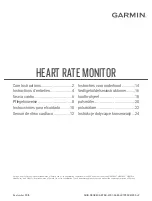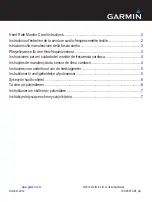
2001 Wohler Technologies, Inc. ALL rights reserved
4
III.
MAINTENANCE AND CALIBRATION
AM-2B units are aligned at the factory to operate at normal studio line levels. However,
occasional transfer of units to another installation in which line level standards are different,
or a "touch up" alignment to compensate for long time aging may require re-calibration
procedures.
CHANGING TO A NEW LINE LEVEL STANDARD
The AM-2B uses precision resistors to correctly scale input buffer amplifiers to various line
level ranges. These resistors, which are incorporated in the AM-2B signal printed circuit
board, are selected by movable jumper plugs to preset the input amplifiers to the range of 0
dBm, +4 dBm and +8 dBm. Final, precise alignment is then set with 20 turn potentiometers
listed on the potentiometer summary. The jumpers only preset to a range, so any jumper
changes require final adjustment with the potentiometers.
CALIBRATION
An audio test set or a test oscillator and an AC voltmeter (preferable calibrated in dBm) are
required to calibrate the AM-2B.
Set the test oscillator to output amplitude equal to the studio reference tone level (+4 dBm,
+8 dBm, etc.). This should be cabled from the test oscillator to the AM-2B with a "Y" cable,
as discussed in the section on operation.
All further adjustments are made with the potentiometer listed on the potentiometer
summary page and the range selection jumpers.
1. Connect the test oscillator input to channel 1, left input, only. Adjust the front panel H
and V position, intensity and focus controls so that a stationary, vertical line trace is
obtained. Using the H position control, move the vertical line trace to the right or left-
hand edge of the CRT.
CAUTION
USE AN INSULATED ADJUSTMENT TOOL FOR THIS ADJUSTMENT
AS CIRCUIT POINTS OF HIGH VOLTAGE ARE NEAR.
1. Adjust R2, which is positioned facing up, mounted on a bracket directly behind the CRT
socket, until the vertical line trace is vertical. This sets trace rotation.



































